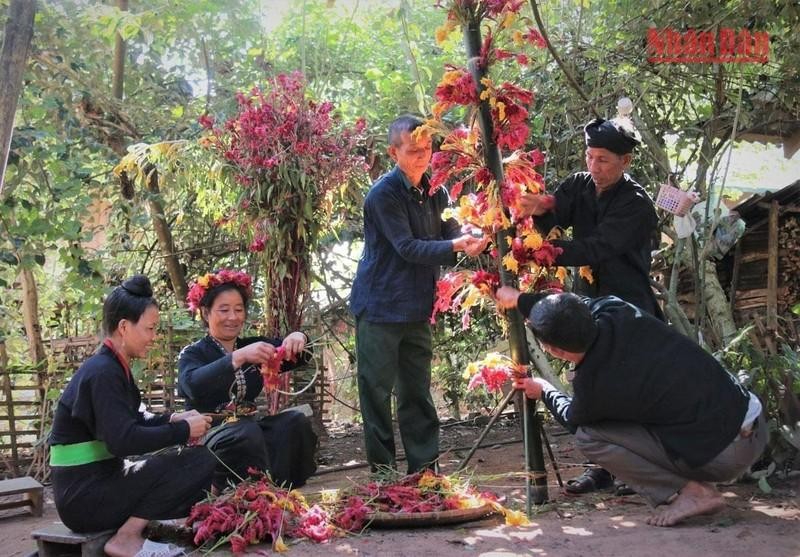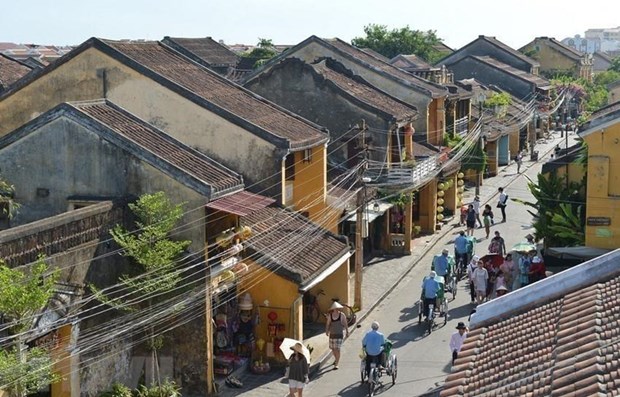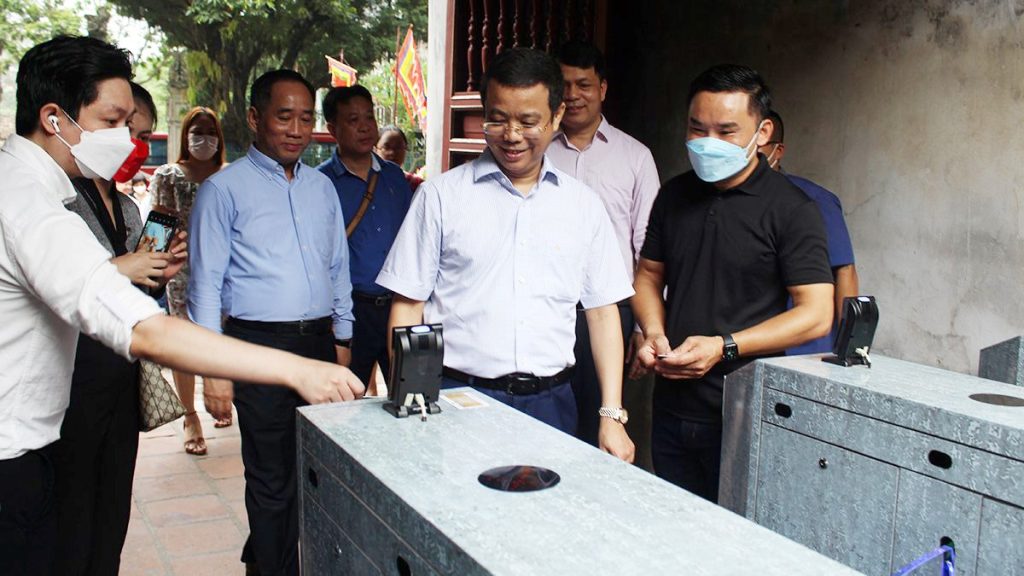Every year in the tenth lunar month, the Cong ethnic community in La Cha village, Pa Tan commune, Nam Po district, in the northern province of Dien Bien, joyfully celebrate their traditional cockscomb flower festival.

According to their belief, the red cockscomb flower is a symbol of good luck and fortune. This flower is also considered a bridge connecting the two worlds of yin and yang, and the path the ancestral souls take from the sacred world to the place of worship.
Therefore, the Cong ethnic community hosts the festival to welcome things as brilliant as flowers.
Lo Thi Phun, a local woman in the village, said that during the festival, Cong women are dressed in their most beautiful traditional costumes. They pick up fresh cockscomb flowers and braid them into head rings, and use them to decorate their houses and the village. The flowers are also used to make bracelets and necklaces.
This year, elder Lu Van Chanh was entrusted by the villagers to preside over the worshipping ritual of the festival.
Chanh said that every house donated offerings, which are homemade agricultural products, to the ritual, and Chanh had to prepare the tray of offerings so that it can represent all families in the village.
In his speech at the ritual, on behalf of the villagers, Chanh conveyed thanks to his ancestors and for the past year of good health, bumper crops, and prosperity, and then he prayed for a happy new year.
When the ritual was completed, La Cha villagers gathered together to sing their traditional songs. Young people and children participated in various folk games such as tug of war, walking on stilts, and spinning.
Cong people are one of six ethnic groups living in Pa Tan commune. In La Cha village, there are 82 Cong ethnic households, with a population of more than 400 people.
The spiritual life of the Cong people in La Cha village is celebrated with many rituals, in which the cockscomb flower festival is the most unique and important ceremony of the year for the ethnic group.
In February 2019, the festival was listed as a national intangible cultural heritage by the Ministry of Culture, Sports and Tourism.
Source: NDO – en.nhandan.vn




